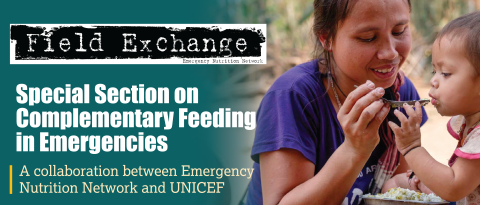Updating national community-based management of acute malnutrition guidelines: Lessons from previous experiences
This is a summary of the following report: GNC Technical Alliance Wasting thematic working group & Carr S (2022) Updating national CMAM guidelines: Lessons from previous experiences. https://www.ennonline.net/updatingnationalcmamguidelines2022
The World Health Organization (WHO) is currently updating guidelines for the prevention and treatment of child wasting – ready for release in 2023. To impact practice on the ground, these new WHO guidelines will need to be translated into national guidelines. This report, undertaken by a sub-group within the Global Nutrition Cluster Technical Alliance ‘Wasting’ thematic working group, explores the past experiences from a diverse range of countries on developing and/or updating their current wasting guidelines to better inform the upcoming processes. In total, 20 key informant interviews were conducted representing seven different countries. A comprehensive national community-based management of acute malnutrition (CMAM) guideline ‘mapping matrix’ was also developed to summarise current guideline status for 95 countries, including the year they were last updated and any plans for upcoming revisions.
The study found that the process used for developing and updating CMAM guidelines varied greatly across the seven countries. The overall time for the original development of guidelines ranged from eight to 18 months and updates took anywhere from around two to 24 months. The stakeholders involved in the process included relevant United Nations agencies, local and international non-governmental organisations, foundations, donors, governments, professionals, and academics. Representation from civil society and communities was absent in most countries, contradicting their importance in the governance of primary healthcare. The cost of developing and updating CMAM guidelines was largely unknown although many felt it was both costly and time demanding.
Countries were predominantly motivated to update their guidelines to align with the WHO guidance and to account for local contextual challenges and differences. The most common barriers that countries faced in this process were funding and stakeholder consensus, and the most common facilitating factors included Ministry of Health leadership and commitment and an active nutrition working group as well as stakeholder commitment and availability. Most countries interviewed were aware that a WHO update is imminent, with many key informants learning of the update through word of mouth rather than official notifications. When countries were asked if they had plans to update their CMAM guidelines following the new WHO revision, two countries responded by saying that they had just completed updating their guidelines and they would need to consider what the updates were and how they would translate to their contexts. Two countries were actively awaiting the new guidelines ahead of making any updates.
Key informants identified the following needs in order to support the guideline updates: technical nutrition support; financial support; human resource support; capacity building for health workers; support from an external consultant; support from guideline training packages and material; support with rolling out guideline implementation, including the creation of training materials for frontline health workers on any new aspects of the guidelines; and support from the WHO to get started, including the provision of a roadmap and budget template, and a summary of what is new in the latest update.
Based on these findings, the report makes 14 recommendations, aimed at national governments, relevant United Nations agencies, and supporting civil society organisations. The report concludes that the lessons learned, and recommendations generated, should help future guideline update processes. Efficiently rolling out the new WHO guideline updates into practice is considered to be another opportunity to support the reduction in children suffering from wasting to <3% by 2030.


 English
English Français
Français Deutsch
Deutsch Italiano
Italiano Español
Español